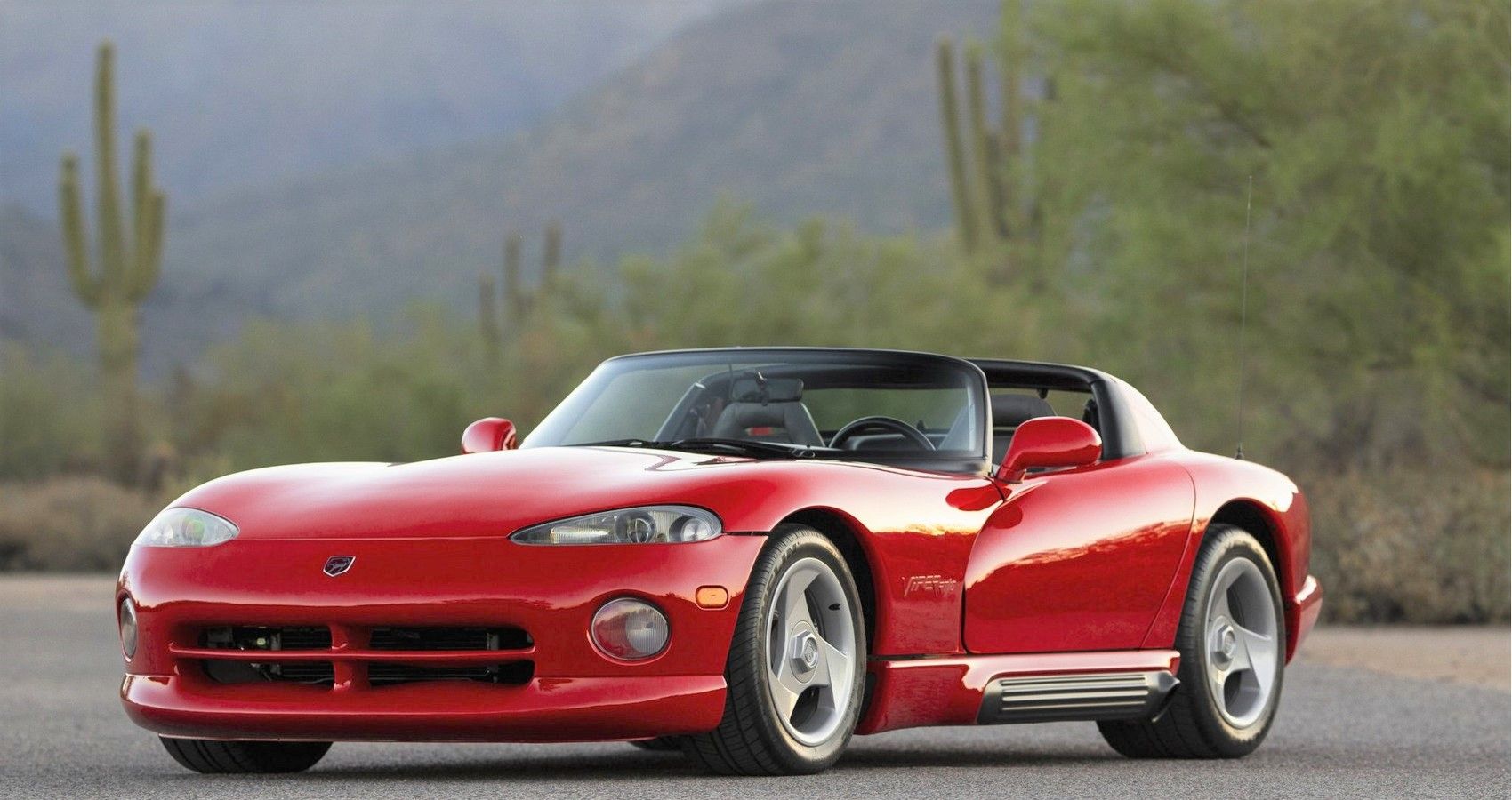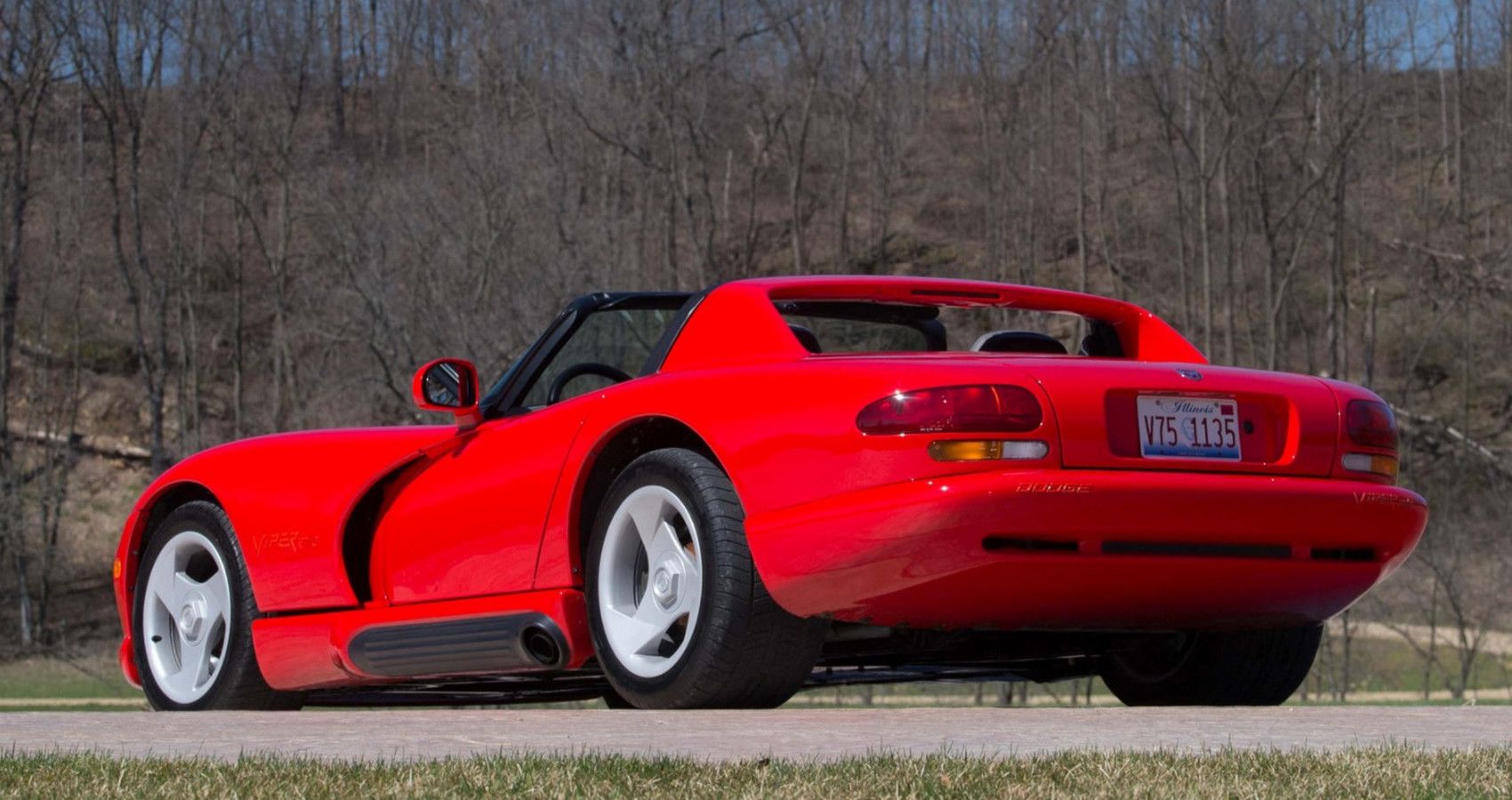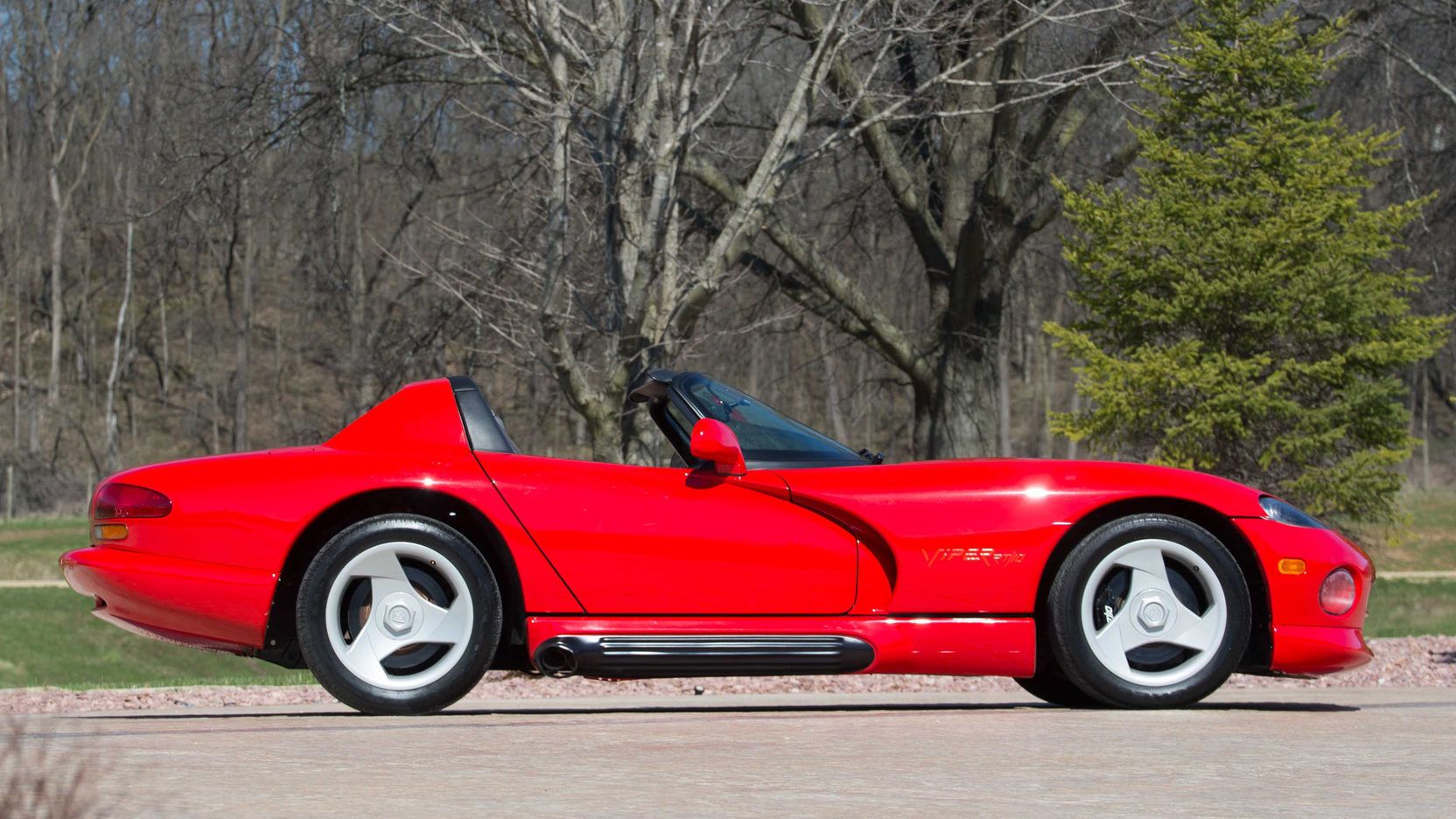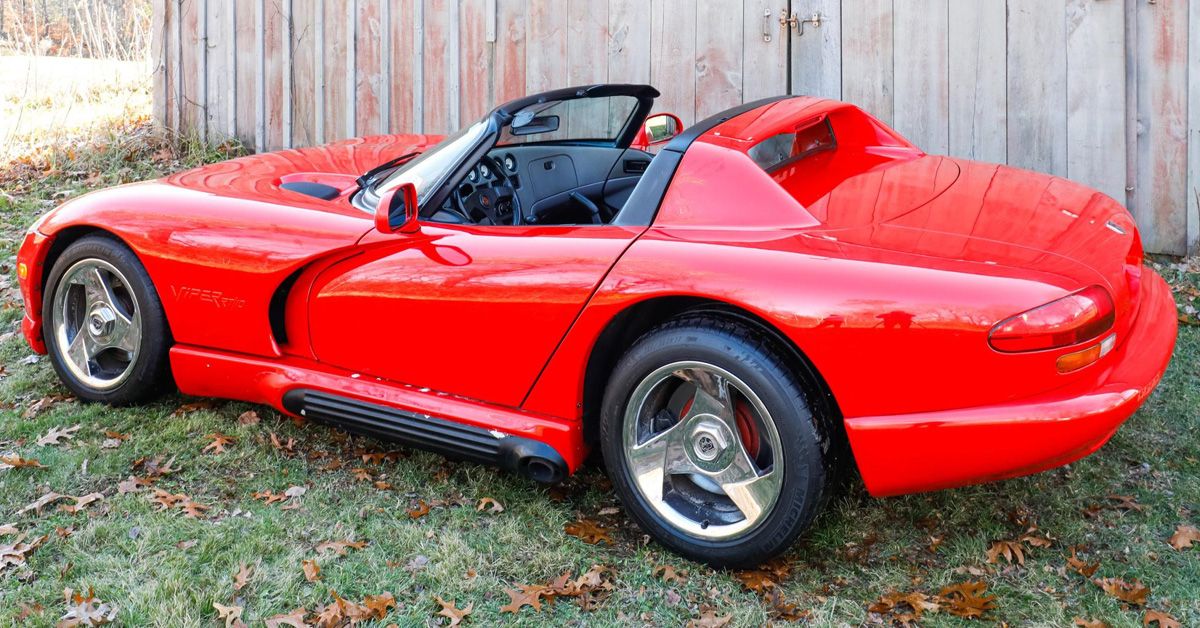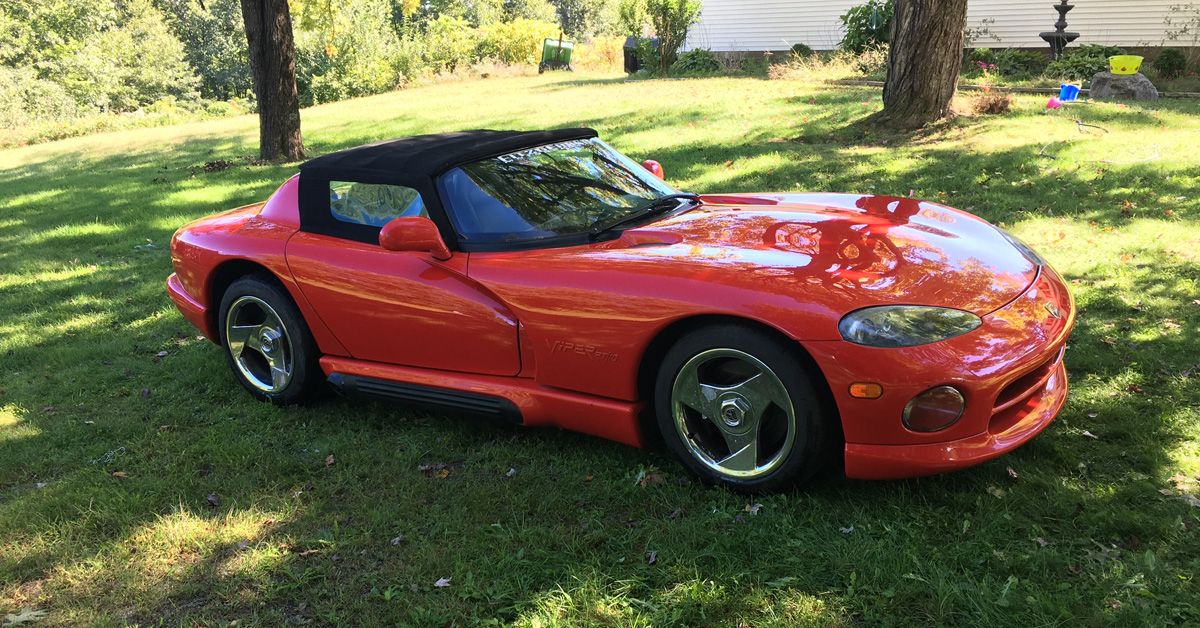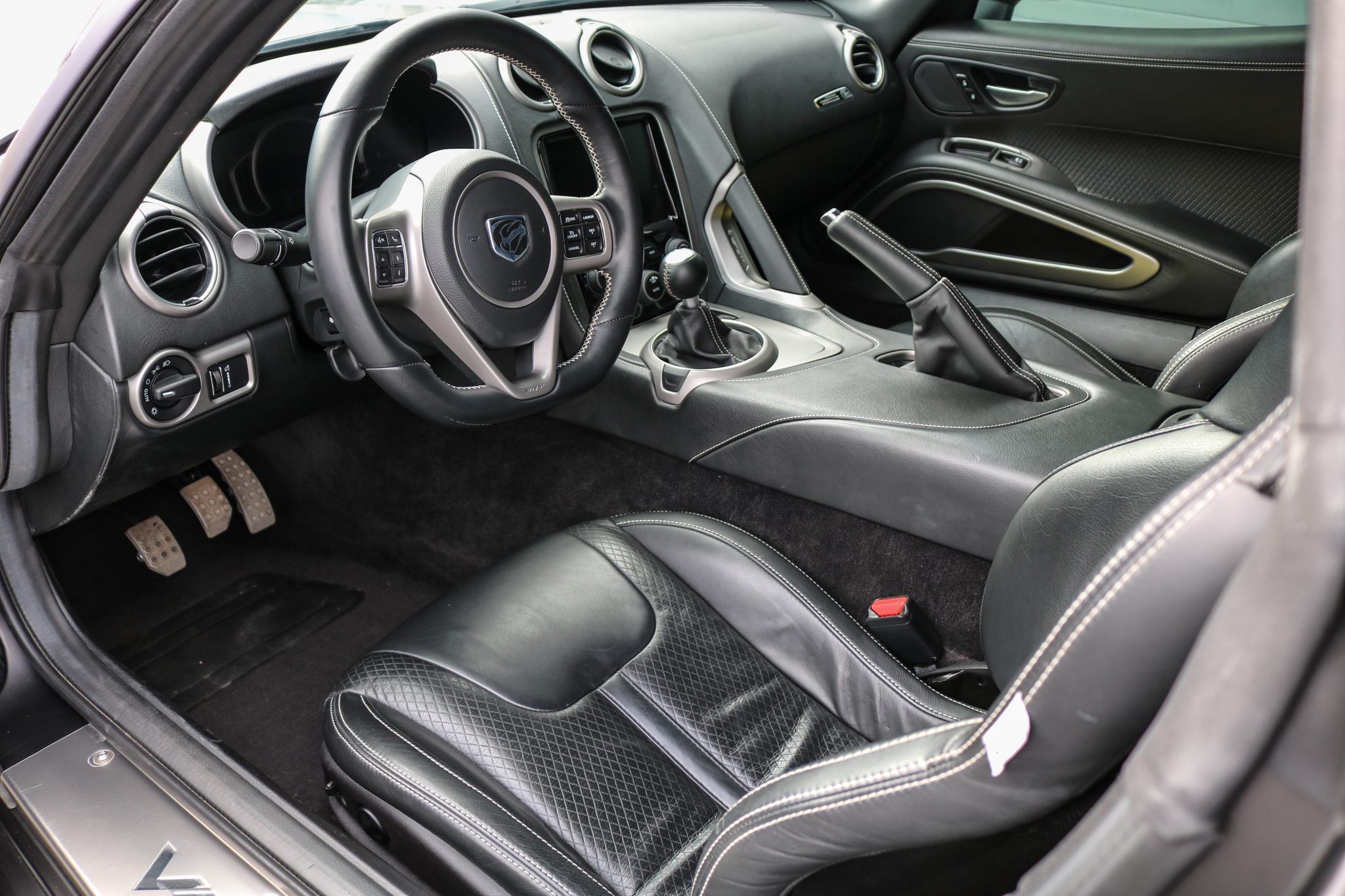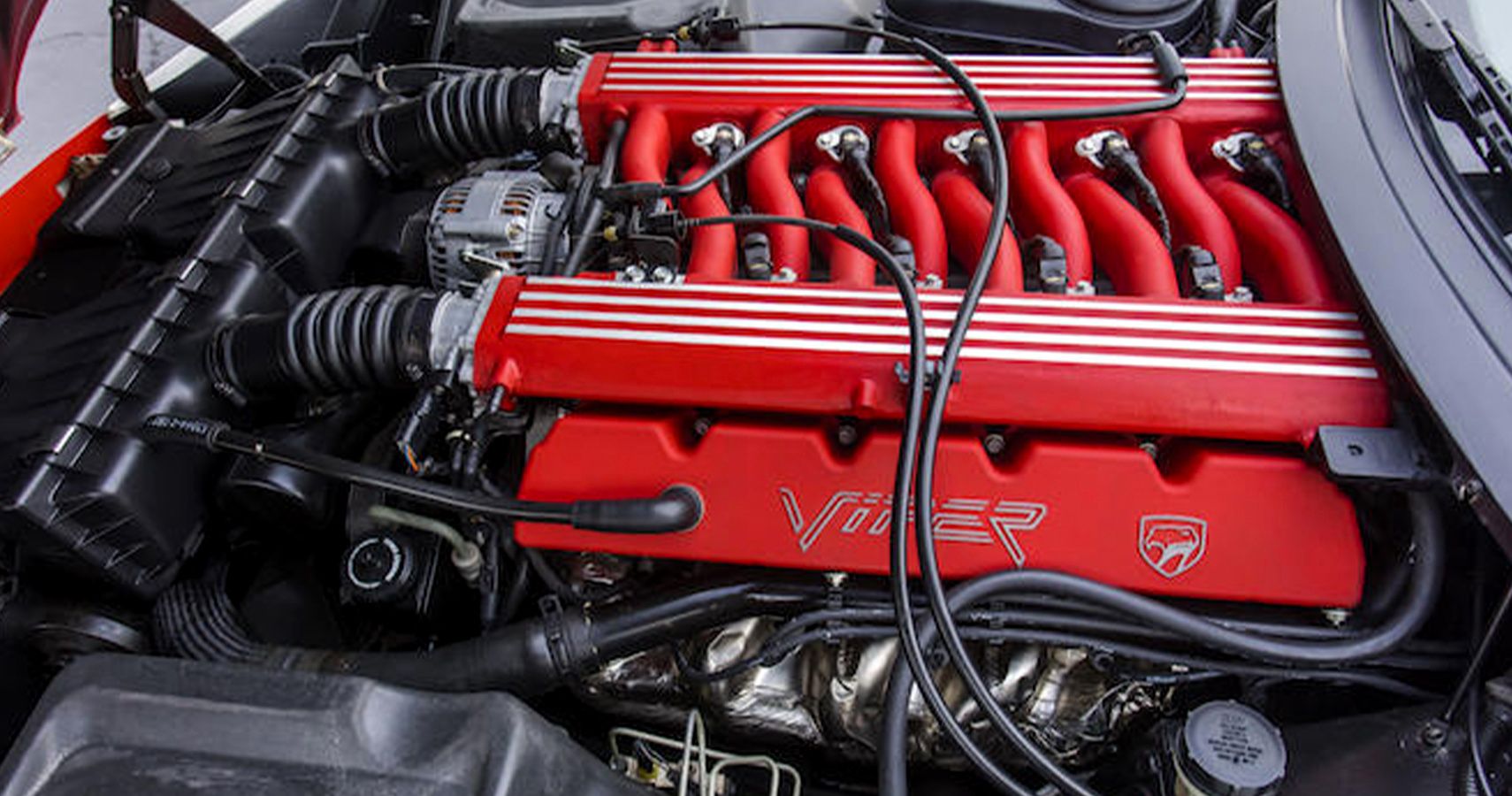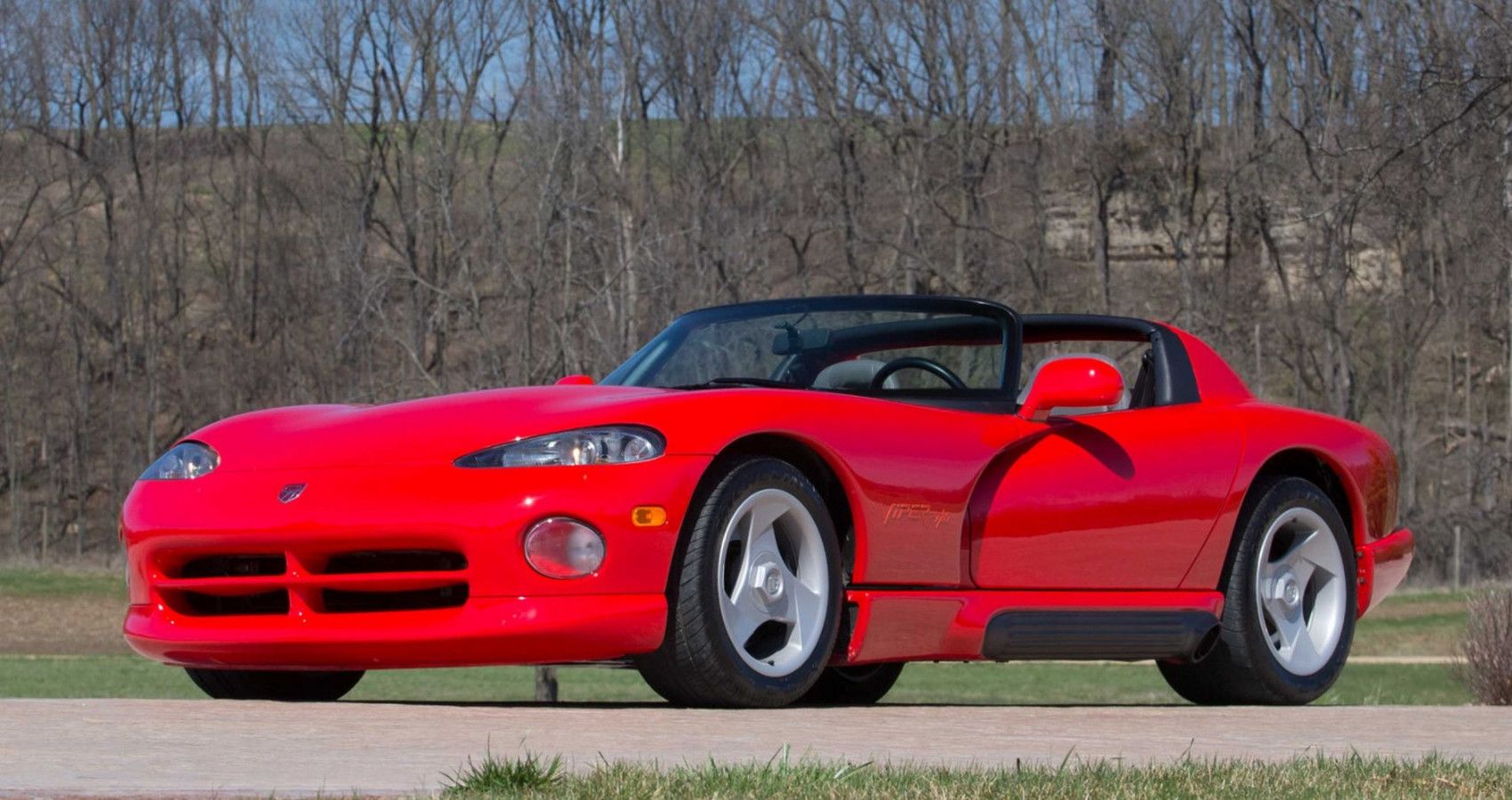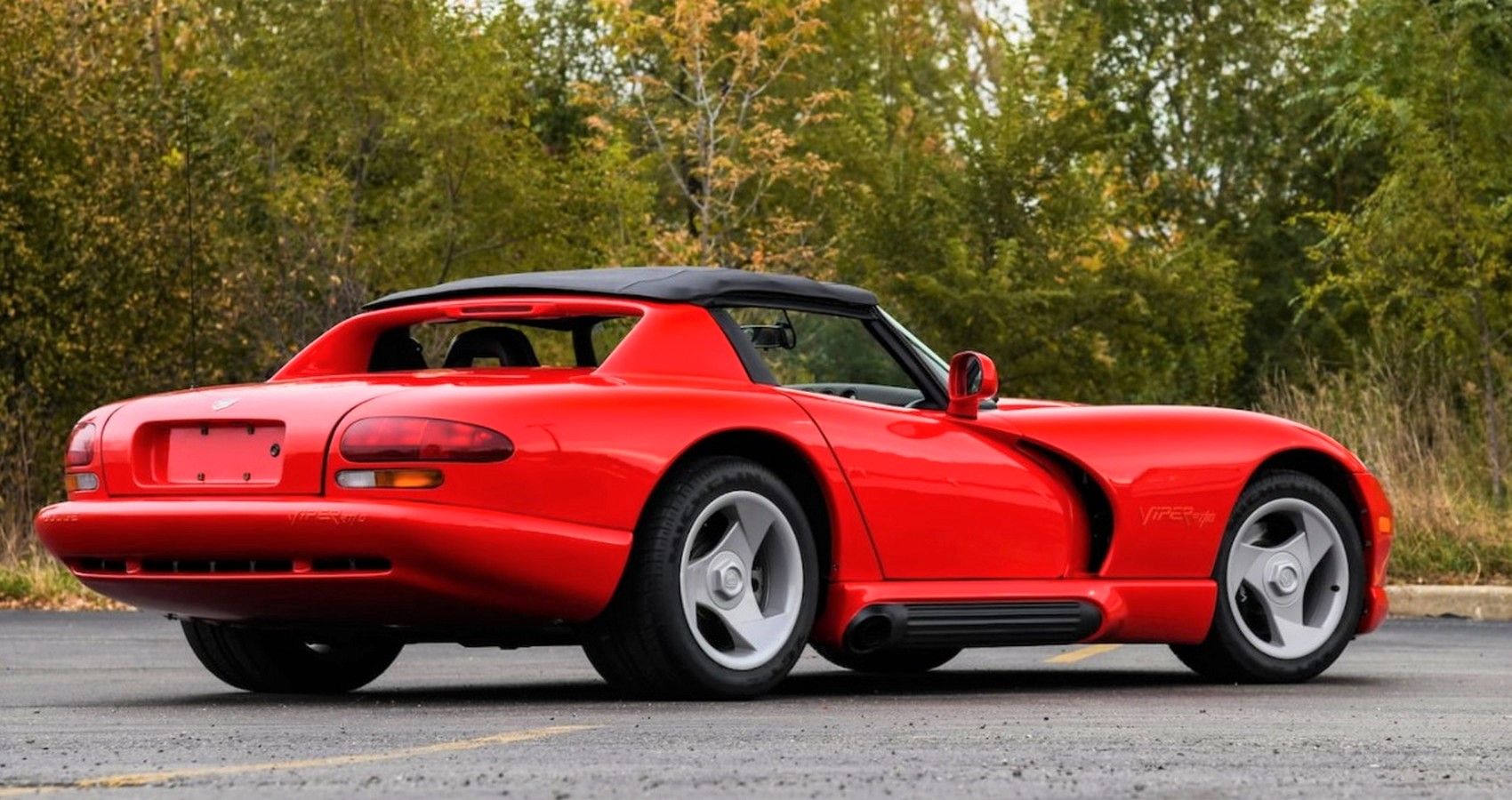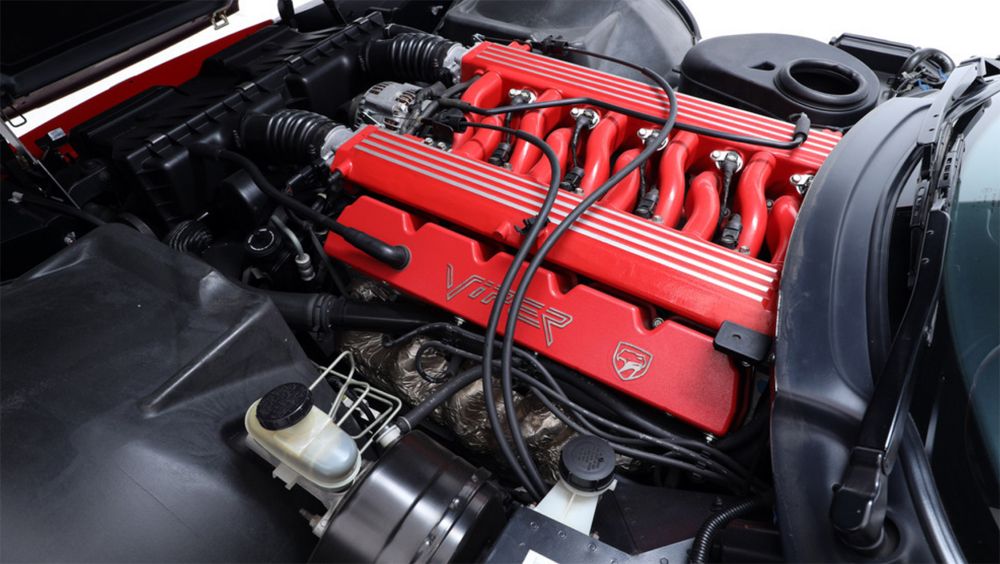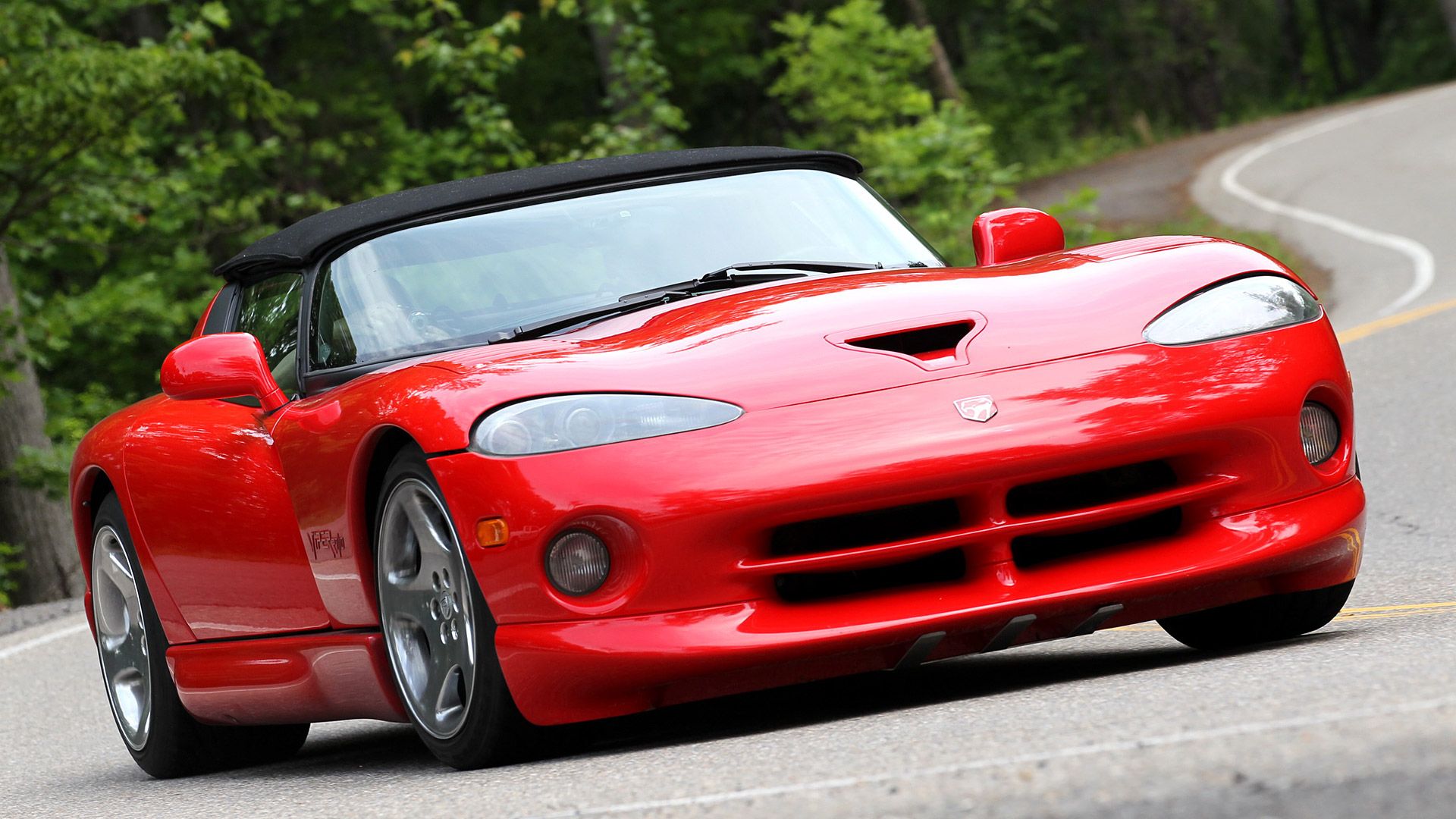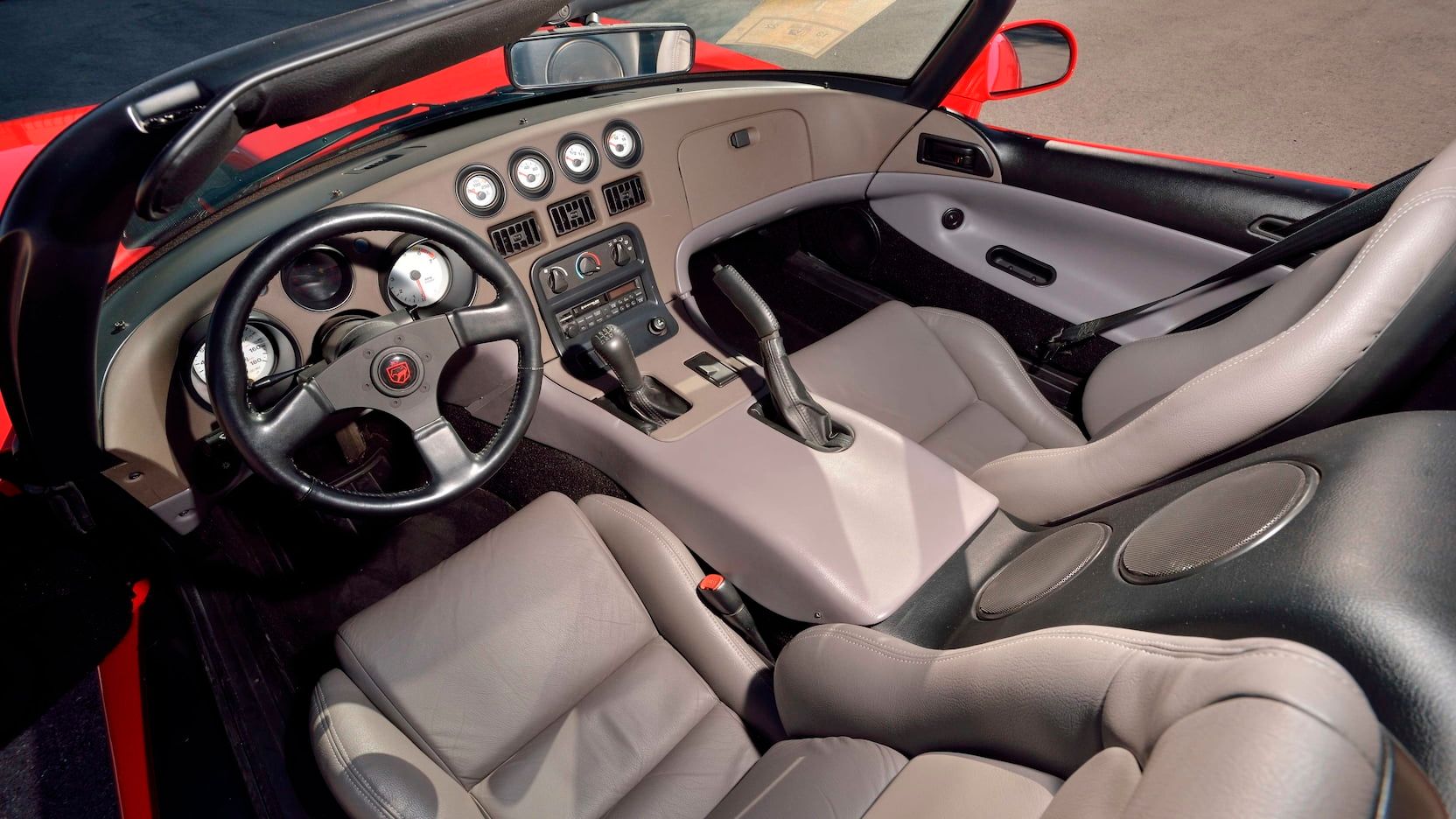When Dodge finally introduced the Viper to the public as a prototype in 1989, it was like nothing the world had seen since the legendary Shelby Cobra of the 1960s. The outcry was so massive that the three-year wait until 1992 for the Viper to finally go on sale felt like an eternity to salivating gear-heads. The Viper was the collaborative brainchild of Chrysler’s hotrod-minded then president Bob Lutz, CEO Lee Iacocca, designer Tom Gale, and of course Carroll Shelby.
The first generation of the Viper was as raw and unrefined as a modern-day sports car could be, offering up a scintillating, and sometimes frightening driving experience like nothing else in the modern world of automobiles. The C4 Corvette and Porsche 911 both offered far greater levels of livability and day-to-day comfort, but no production car could match the Viper’s sheer power and ferocity.
1992-1995 Dodge Viper RT/10 (SR1)
- No Frills Driving Experience
- Convertible
- Modern Day Shelby Cobra
- Model: Viper RT/10
- Engine/Motor: 8.0-liter V10
- Horsepower: 400
- Torque: 465 pound-feet
- Drivetrain: Rear Wheel Drive
- Transmission: T56 BorgWarner 6-Speed Manual
- Big Power For A Stock Production Car
- Head-Turning Style
- Track Ready Handling
- Not For Everyday Driving
- Skin-Searing Sidepipes
- Difficult to Maximize Power Potential
More Than Capable Engine
Right out of the gate, Dodge outfitted the Viper with a massive, old-school overhead valve pushrod 8.0-liter (488 cubic-inch) aluminum V10 that began life as a Ram truck engine that Chrysler sent to its then subsidiary Lamborghini for some serious tweaking. That effort ended up with a much more race-ready engine that produced 400-horsepower at 4,600 RPM and 465 pound-feet of torque at 3,600 RPM. That power output surpasses both the same year 911 Turbo at 315-horsepower and even the top-of-the-line Corvette ZR1 with its 375-horsepower.
Low Production, Big Power
The inaugural 1992 Viper class only produced a total of 285 models, and stayed true to its racing heritage by not offering any creature comforts like air-conditioning, airbags, or ABS, and even did without some basic “features” like glass side windows, door locks, or even door handles.
The Viper funnels all that power to the rear wheels through a Borg-Warner T56 six-speed manual transmission that did not have a reverse lockout. And with only 3,285-pounds to move, the Viper could rip from 0-60 mph in a staggering 4.5 seconds, 0-100 mph in 9.2-seconds and through the quarter-mile in a scant 12.9-seconds on its way to a top speed of 165 mph. The major issue with the first 10 Vipers especially was their propensity to snap around and bite an unsuspecting novice driver in the rear thanks to some serious oversteer. It took a very skilled driver to get the most out an early Viper without casualty, but then that violent aggression is a big part of what gave the Viper its charm. This was a true raw driving experience, and while Dodge continues to offer vicious cars, none have the animalistic characteristics of the first gen Viper.
Unabashedly Raw Vehicle
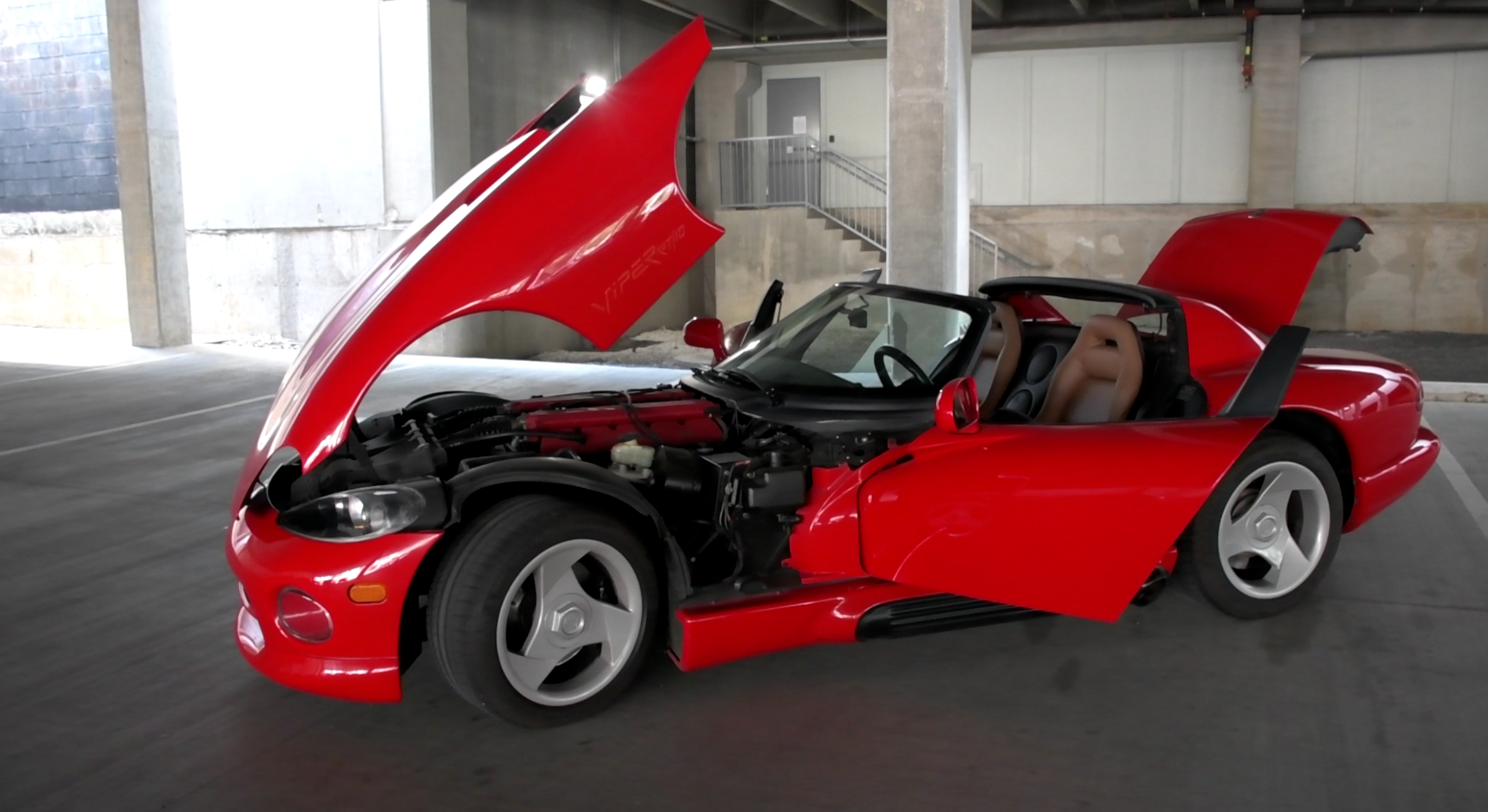
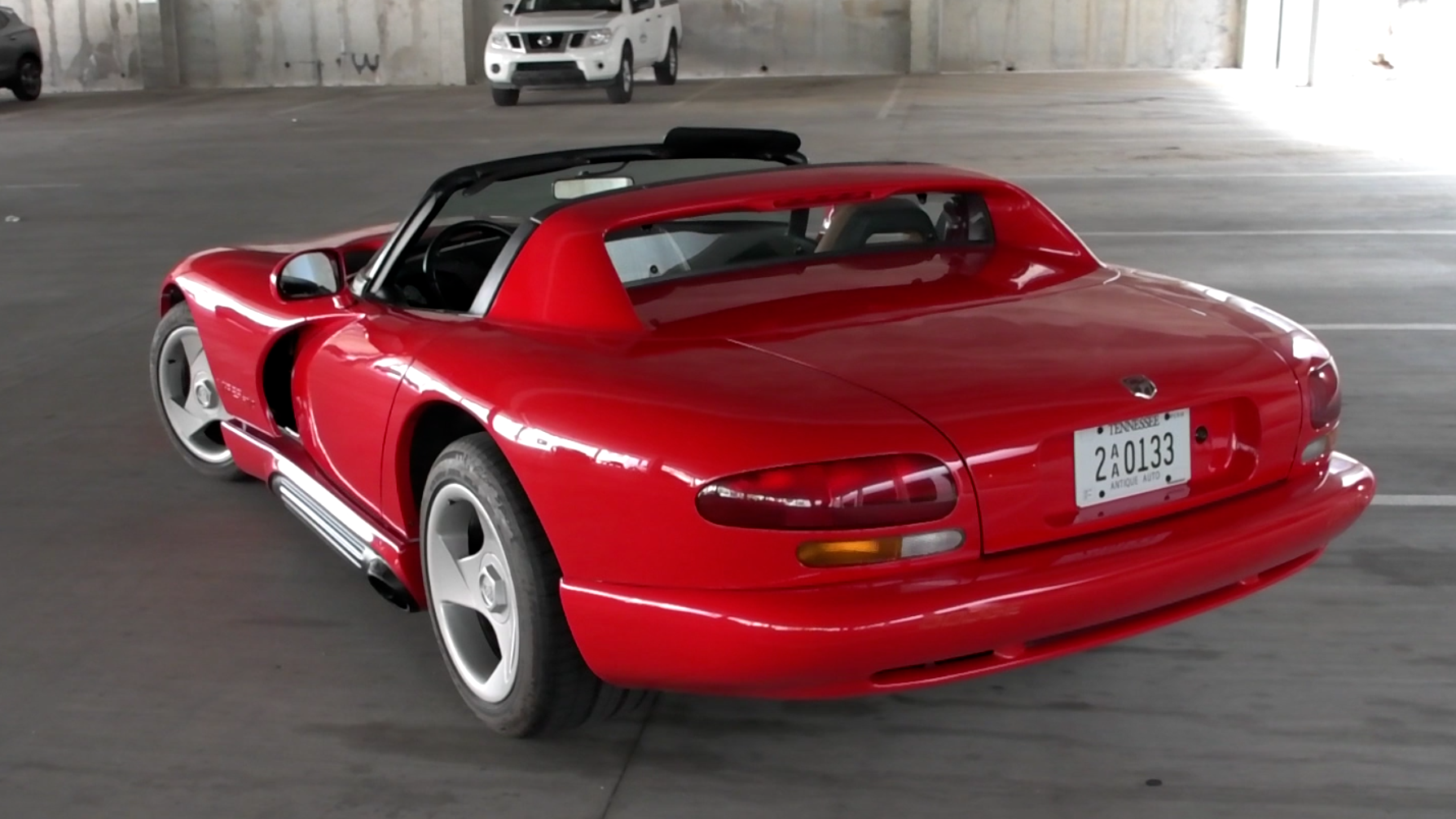
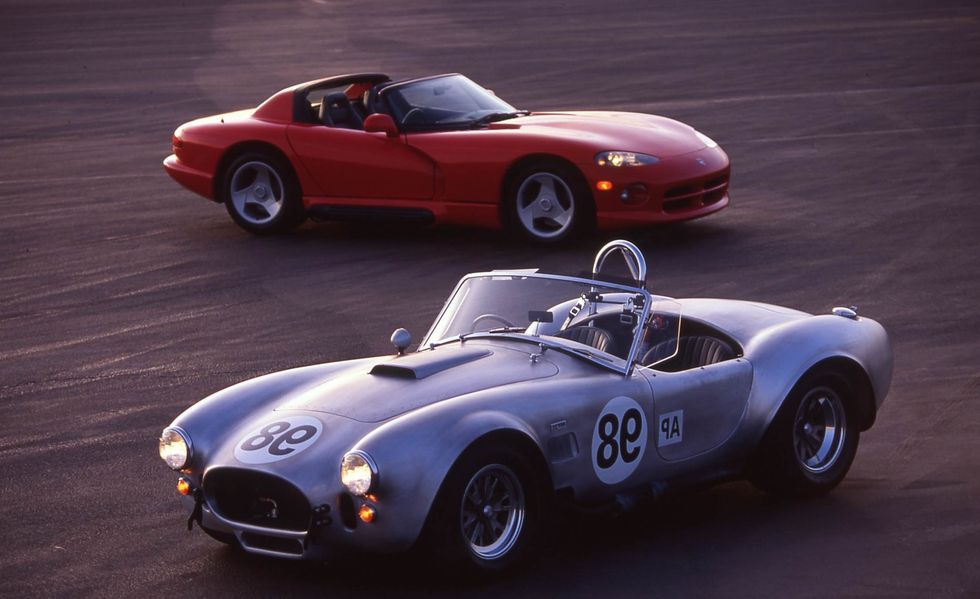
The Viper received mixed praise for its original side pipes. Some owners learned the hard way that they may lose a layer of skin getting out of a warmed up car the hard way, while others found the unusual firing order and general sound of the Viper’s engine at speed polarizing. However, whether it was liked or not, the Viper’s sheer power and track capabilities commanded respect.
Purpose Built Machine
Thanks to a stout tubular steel frame, as well as massive 275/40R-17 front and 335/35R-17 sized tires out back, the Viper managed to pull an incredible 0.96 g around the skid-pad, making it one of the best cornering cars of its era. By comparison, the 911 Turbo could only manage 0.91g while the mighty ZR1 checked in at a distant 0.87g. Of course, with its huge V10, even though the engine itself only weighed 712-pounds, the Viper was a gas guzzler posting 12/20 city/highway mpg, and even less so depending on driving style.
Dodge did produce many more Vipers in the following years up until the debut of the second generation in 1996, but only by comparison to the very limited first year run. 1,043 models rolled of the production line in 1993, 3,083 in 1994 and 1,577 in 1995, all being the RT/10 convertible models. The second-generation Viper GTS did not debut until 1996.
Advancing In Features
In 1994, Dodge finally relinquished some of the more pure race car aspects of the Viper and began to allow customers to order it with some very basic creature comforts. Air-conditioning as an option, while the canvas roof and plastic windows continued on, though a removable fiberglass roof was also made available as an option in 1994 models. "Standard Features" included things like manually-adjustable seats, an AM/FM stereo cassette player, and interior carpeting.
Collectors will gravitate to the low-production 1992 Viper, but after that, any first generation with low-miles and an unmolested engine will command attention at an auction thanks to the sheer audacity of the original car’s look and stance.
The original Viper came to market with a sticker price of $50,700, which adjusted for inflation would be about $90,000 in today’s dollars. According to Classic.com, a first gen Viper has an average resale price of $46,617, with the lowest sale price being $21,000, and the highest being $285,000. Mileage, track-use, and abuse, as well as modifications will all play a role in the final sales price of these cars, as some were garage queens while some spent their life racing at the track.

